Jeremy, this is a great piece. Thanks for all the work you did no this.
Time to really stir up some controversy, eh?
Was the M4 Sherman Tank Really as Bad as All That?
“Men in general judge more from appearances than from reality. All men have eyes, but few have the gift of penetration.”
-Niccolò Machiavelli
"The majority of people are timid by nature, and that is why they constantly exaggerate danger. All influences on the military leader, therefore, combine to give him a false impression of his opponent's strength, and from this arises a new source of indecision."
- Karl von Clausewitz, On War
“We are always paid for our suspicion by finding what we suspect.”
- Henry David Thoreau
“Der Motor des Panzers ist ebenso seine Waffe wie die Kanone.” (“The engine of the tank is a weapon just as the canon.”)
– Colonel General Heinz Guderian, Quoted in "Die Deutschen gepanzerten Truppen bis 1945" - Page 159 - by Oskar Munzel, 1965
“They (the British) are behaving as if they’d won the war already.”
– Tiger tank gunner.
“We’re going to prove them wrong.” - SS Obersturmfuhrer Michael Whittmann, Tiger tank commander, at Villers-Bocage, Normandy, France 13 June, 1944.
One of the persistent urban myths to come out of the big one, Dubya Dubya Two, is that the U.S. M4 Sherman tank was a flaming death trap, totally inadequate for the job. It’s probably way past time to clear this up and set the record straight. So was the M4 Sherman tank really as bad as all that? In a word, no. It wasn’t the most advanced and the most powerful tank design of the war, but it was in no way the worst or most vulnerable. The truth is it did the job and did it well, and didn’t inordinately endanger the lives of American tankers in the process.
First off, the allegation that the gasoline fueled engine of the Sherman was especially prone to catch fire is not true. No more than any other gasoline powered engine in any other tank. Nope, it wasn’t the “Ronson lighter” or the “Tommy cooker” it was rumored to be. Hey, young soldiers love to give snarky and irreverent nick names to everything, don’t they? Among other considerations this allegation overlooks the salient fact that all the German tanks, including the Tigers and Panthers, had gasoline fueled engines as well.
The actual fire hazard in the Sherman tank, and every other tank in the war, was the onboard ammunition for the tank’s canon, particularly the propellant charge of the canon round. Much of the canon ammunition was stored inside the crew compartment for easy access during combat. Thus if a tank, any tank, suffered a penetrating hit of its armor by an enemy armor-piercing projectile, whether it was an armor-piercing shell, armor-piercing solid shot or a shaped-charge shell or rocket, there was the danger of secondary explosions and fire if the canon shells stored inside were ignited. In fact it was common practice to keep firing on a disabled tank in order to start such a fire to completely destroy the tank so the enemy could not recover and repair it. The bottom line is that the Sherman was no more prone to catching fire and “brewing-up” when hit than any other tank in service at the time. And that was during the Sherman’s’ first two years of service when it had “dry stowage” of its cannon ammo.
By late summer 1944, the U.S. Army largely eliminated the danger of explosion and fire from a detonation of onboard canon shells when it introduced “wet stowage” to all Sherman tanks. In wet stowage the canon rounds were stored in racks down on the floor of the hull encased by an outer shell filed with water or other fireproof fluid. By all accounts, this modification decreased the rate of onboard ammo fires when penetrated by an overwhelming 75%. Better than any other tank of the period. Due to the lessons learned in WWII the current M1 Abrams tank was designed to carry all its canon ammunition in a separate fire proof compartment with blow out panels so that if the ammo got hit and brewed up the crew would be protected. And it works.
The allegations that the Sherman’s gun and armor protection were completely inadequate are also inaccurate. Certainly not true during the entire course of the war. After all even the Sherman’s original low-velocity 75mm canon was powerful enough to blow up most of the stuff the Germans had. Its armor protection was enough to protect it from most of the hazards of the battlefield. It just ran into trouble whenever it encountered the heavily armored Panthers and Tigers with their powerful long-ranged canons (which wasn’t all that often even after D-Day when you get down to cases). When the Sherman was equipped with the 76mm cannon and the T-4 tungsten carbide High Velocity Armor Piercing (HVAP) shells in 1944 it evened the odds against the Panthers, and even the Tigers, quite a bit. The 76mm HVAP round could penetrate the Panthers and Tiger I’s at any angle at up to 1000mm.Typical average tank engagement range in the ETO was 890 meters, given the terrain. No US tank commander was happy facing Panthers and Tigers, but the fact is if used intelligently the Sherman held its own in most situations, especially the later versions. This is described in depth by the sources available in the hyperlinks I have provided below.
Also in reality the German Tiger and Panther tanks weren’t totally the invincible juggernauts they are popularly portrayed as either. They were powerful war machines for sure, but they were not without their own foibles and weaknesses. The Panther tank, for example, is often lauded as the “best medium tank of the war”. Is this true? Partially so. The Panther’s main gun and frontal armor protection were both superior to that on any other tank in its weight class at the time. Its high velocity KwK 42 75mm canon could score hits and even penetrate the frontal armor of a Sherman at up to 2000 meters range. An older model Sherman with the low-velocity 75mm gun could not penetrate the Panther’s sloped frontal armor even at close range. Its torsion bar suspension and overlapping road wheels combined with wide treads gave the Panther a smooth ride like a Cadillac. However on the downside the side armor of the Panther was less thick than even that on a Sherman (45mm versus 63mm on the turret side). Added to this is the fact that 52 rounds of cannon ammunition was stored in the inside sponsons in this area, making it vulnerable to catastrophic ammunition fires if penetrated. And even worse, the Panther was a lemon mechanically. It was rushed into service and had so many design flaws in its power train that it broke down frequently. Features like the overlapping road wheels made it difficult to repair in the field. As a consequence fully half of the Panthers lost in combat were destroyed by the Germans themselves when they broke down and couldn’t be recovered. How’re you going to win a war with a tank that breaks down on you all the time? The fact is you can’t. So removing the main gun and frontal armor protection from consideration, the Panther was nowhere close to being the best medium tank of the war. The Panther was too expensive and too complicated and too unreliable. It never completely replaced the Panzer IV as was intended and at its greatest numbers it amounted to less than half the panzer force. ”Furthermore the US Army’s instance on durability meant that not only did the US Army have more tanks but it had more tanks in action on the battle line since a smaller percentage were dead-lined with mechanical problems than was the case in Panther battalions” (Stephen J. Zaloga, “Panther VS Sherman” – Battle of the Bulge 1944, Osprey Duel #13). Besides the tanks in US armored divisions, the separate Sherman and tank destroyer battalions that accompanied US infantry divisions contributed to those divisions’ offensive combat power considerably and saved many American lives.
So a tank that is mechanically reliable is a jеwel to be cherished. Like Heinz Guderian himself, the Father of the German Panzer Corps, said, the engine of a tank is as much a weapon as its canon. Mobility is what it’s all about in armored warfare. The mobility of the tank allows it to take the fight to the enemy and out-maneuver him as well. Mobility also allows you to drive out of trouble as fast as you got yourself into it. Mobility and mechanical reliability were the Sherman’s forte by far. This durability and reliability made it a valuable asset in fast-paced, armored warfare. Couple this with the fact that it had an effective cannon, sufficient armor and good cross country mobility and was mass produced in greater numbers than any other tank of the war to boot, and the Sherman was in fact a good enough tank produced in sufficient numbers and available at the decisive time and place. As Patton observed, a good plan today violently executed is better than a great plan tomorrow. For tomorrow never comes, as we all know.
Keep in mind that track-laying armored fighting vehicles (AFV) are actually fragile pieces of machinery. The stress of carrying so much weight cross country wears out the vehicle’s drive train in a hurry. After just 5000 miles of operation the tracks and power train of an AFV will be completely worn out, such that it must be sent back to depot for a complete rebuild. Because of this fragility you want to move tanks and other AFVs under their own power as little as possible so you can get maximum use out of them in actual combat. You want to transport them by rail car or flatbed semi-truck as close as you can to the front before offloading them The German’s lacked the heavy trucks the American Army had (M19 and M26A1 heavy equipment transporters) and were largely tied to rail transport. Mechanically robust tanks like the Sherman and the Soviet T-34 could typically self-deploy to a new front over a hundred miles away without experiencing an inordinate number of breakdowns, and did. Tigers and Panthers could not.
“Is the German tank able to move for long distances and continuous periods at a steady rate of speed? How is its endurance? Could 53 Tiger tanks, for instance move from the vicinity of Fenetrange, France, in the Saar, to an area near Bastogne, Belgium, a distance of 151 miles in less than twenty-four hours to answer a fire call, as did tanks of the Fourth Armored Division?”
- LTC Albin F. Irzyk, Headquarters, 8th Tank Battalion, 1946
Veteran American tank commanders of the ETO, like BG Albin F. Irzyk, were of the opinion that the Allied dash across France in the summer of 1944 would not have been possible without the superlative mobility and mechanical reliability of the Sherman. Following the war then LTC Irzyk submitted a letter to the U.S. Army professional journal “Military Review” addressing the postwar critics of the Sherman and giving a comprehensive apples to apples comparison of German and American tanks. This article was reprinted in the Association of the Army (AUSA) newsletter, February 2017 issue, on the occasion of the 100th anniversary of the U.S. Army Armor Branch (1917-2017). A very interesting account by someone who has been there, done that and got the t-shirt.
#{"issue_id":378825,"page":10}
AUSA News February 2017 Special Report: U.S. Tank Corps Celebrates 100th Anniversary – Irzyk Explains Performance of American Tanks in World War II Page 10-14 – A reprint of “Tank Versus Tank” by Lieutenant Colonel Albin F. Irzyk, Headquarters, 8th Tank Battalion, “Military Review”.
;
Brigadier General Albin F Irzyk - Part 1
General Irzyk Albin - Army Veteran Interview
Now one of the sources that has been promulgating the urban myths about the Sherman in recent years is actually a book I happen to like: “Death Traps: The Survival of an American Armored Division in World War II” by Belton Cooper. Ballantine books 1998. I enjoy reading about people’s personal impressions of the experience of war, so I enjoyed reading Belton Cooper’s personal account. Nevertheless, Cooper’s critics are correct in that when he strays into discussions of the big picture of the history of the war in Europe he gets an awful lot wrong. He also appears to have flat made some things up, such as Patton’s role in the decision on whether or not to equip the invasion force with the Pershing tank (Patton had nothing to do with it, pro or con; he wasn’t even in the loop at the time). One inaccuracy I noted is where Cooper says the Tiger tank’s turret had to be turned solely by a manual hand crank. This is not true, the Tiger tank DID have an electric motor for turning the turret. However the hydraulic power turret traverse on the Sherman was much more powerful and therefore faster than the electric turret motors on German tanks. For example, the turret on a Sherman could traverse through 360 degrees in 15 seconds as opposed to 23 seconds for the standard German Panzer IV. BG Irzyk noted that the faster turret traverse of the Sherman gave it a significant advantage in close combat with the Panzers. Operational research (OR) studies conducted during and after the war concluded that regardless of the types of tanks involved the winner of a tank engagement was usually the party who saw the enemy first and fired first.
The German Tiger and Panther tanks were intended to be offensive breakthrough tanks with thick frontal armor and powerful guns. That’s what they were first used for in the Battle of Kursk on the Russian front. By the time of the Normandy Campaign they were used mostly on defense as mobile pill boxes, as BG Irzyk opined. With their long range guns and incomparable German made optics the Panthers and Tigers could do serious damage to advancing Allied armored formations when they could wait in ambush and see the enemy first and fire first. The Panthers and Tigers made a big impression on Allied tankers and had lot of influence on post-war tank design (eventually leading to the amalgamation of the medium and heavy tank into the modern “main battle tank” [MBT]). However despite their advanced gun technology and armor protection they failed to have the impact on the course of subsequent battles the German Army hoped they would have.
The Tiger tank was hand-made like a Rolls Royce, so not many of them were manufactured. Only 1,347 of the Tiger I and 492 of the larger Tiger II (Königstiger or “Royal Tiger”, the German word for Bengal Tiger) were produced. So as a practical matter encountering a Tiger was not a very common event for a Sherman crew anyway. Especially given that better than half of all available Tiger tanks in the German forces’ separate heavy tank battalions would be deployed against the Russians at any given time. So the stories of the few direct encounters that occurred probably got more hair-raising with the telling. The more commonly encountered German weapons systems like the Panzer IV, the Sturmgeshutz (assault gun) III and the PAK 40 75mmm anti-tank gun did more than enough damage by themselves according to the statistics. But they were not something that a Sherman couldn’t handle with dispatch, provided the Sherman’s crew saw the enemy first and fired first.
In comparison the total quantities manufactured of other late war tank/AFV models was 6,000 for the Panther, 8,553 for the Panzer IV Medium Tank, 10,086 for the Sturmgeshutz III, 35,120 for the Soviet T-34/76 Medium Tank , 48,950 for the Soviet T-34/85 Medium Tank, 3,854 for the Soviet Joseph Stalin IS2 Heavy Tank, 7,368 for the British Churchill Medium Tank , 4,016 for the British Cromwell Medium Tank, 6,406 for the U.S. M10 Tank Destroyer, 2,324 for the U.S. M36 Tank Destroyer, 2,324 for the M18 Hellcat Tank Destroyer, 22,744 for the U.S. M3 and M5 Stuart Light Tanks, 4,731 for the U.S. M24 Chaffee Light Tank and 49,234 for the U.S. M4 Sherman Medium Tank.
As it turned out, only 2,212 of the much vaunted M26 Pershing Heavy Tank were produced as it was discovered during development in WWII and later in combat in Korea that it suffered from design flaws and mechanical problems due to an underpowered engine and a transmission that was not robust enough for the vehicle’s weight. It was quickly replaced in U.S. Army service by both the old reliable Sherman tank (the M4A3E8, the final variant of the Sherman from WWII, dubbed the “Easy Eight” because its wider tracks and horizontal volute spring suspension [HVSS] system gave it an easier ride than earlier models) and the Pershing’s much improved lookalikes the M46 and M46A1 Patton tanks (800 and 360 made respectively). All those tanks acquitted themselves well against the Communist T-34/85 in Korea and dominated the tank vs. tank fight in that conflict. Only the M24 Chaffee light tank with a low-velocity 75mm cannon proved to be no match for the T-34 in the first months of the war.
Also the German firm Rheinmetall manufactured approximately 20,000 of the excellent PAK 40 75 mm anti-tank canons during the war. The companies of Krupp and Rheinmetall together produced 21,310 of the notorious dual-purpose 88mm FLAK canon from 1933 to 1945. Perhaps the most famous use of the 88 was on July 18 and 19, 1944 when then Major Hans von Luck ordered a Luftwaffe 8.8 cm anti-aircraft four-gun battery to fire on advancing British tanks near Cagny, France then taking part in “Operation Goodwood”. 20 tanks were killed by these guns within the first few seconds and at least 40 British tanks total (apparently mostly Shermans) were knocked out by the 88mm FLAK guns during the engagement. The British tanks charging across the flat fields near Gagny like they did were easy targets for the long-ranged 88’s. One might say that Goodwood was sort of a reenactment of the infamous Charge of the Light Brigade in the Crimean War 90 years earlier. Old habits die hard it would seem, although the Brits had reason to believe the massive carpet bombing that opened the Goodwood offensive destroyed most enemy resistance. However, as is often the case, if even a few effective enemy weapon systems survive the preparatory fires they can make you pay a heavy price in casualties for your advance if they catch you out in the open crossing the no man’s land between enemy and friendly lines. Fortunately the casualty rate among the Sherman crewmen for Goodwood was a fairly low average of one killed and two wounded out five total crewmen for every tank hit. Even by the 88’s. Despite this ground action during the entire war, the majority of 88 mm guns were used in their original anti-aircraft role. The British, American and Soviet air forces kept them mighty busy. Your chances of getting shot at by an 88 then were much greater if you were in the air than if you were on the ground in a tank.
Over all in the battles for Normandy the Germans lost some 1,500 tanks against about 1,700 Allied tanks. So while the Germans gave better than they got, it wasn’t by anywhere near enough to tip the balance in their favor. The Allies could easily make good their losses while the Germans could not. The Germans executed their own version of Goodwood at Arracourt France on 19 September, 1944 when two newly formed German panzer brigades advanced blindly into American battle positions and lost some 80 AFVs, including many Panthers, to the Sherman tanks of then LTC Creighton Abrams’ 37th Tank Battalion and the M18 Hellcats of the 704th Tank Destroyer Battalion.
Did Sherman crewmen have a short life expectancy? Was it exceptionally dangerous to ride in a Sherman tank? Actually it was much less dangerous than walking into battle according to the casualty statistics for the ETO. 120,111 out of 757,712 U.S. Infantry soldiers were killed in Northwest Europe (18.5 percent of the force), while 1407 out of 49,516 U.S. tank crewmen were killed in the campaign (3 percent of the force). Further it is estimated that one-third to one-half of these tank crewman were killed while they were outside the tank. By indirect fire (artillery, mortars and rockets, which caused 75% of all casualties in the war) or by small arms fire while they were escaping a disabled tank. So looking at the stats tells us a Sherman crewman’s chances for survival were much, much higher whenever he was ensconced inside a tank capable of moving out.
See the link below for an extremely interesting and enlightening video presentation dispelling myths surrounding American armor in World War II by a historian who has actually researched the Army’s historical archives. At 13:45 into the presentation the historian discusses how and why “Cooper’s book is wrong” (it is a memoir, not a historical work).
Myths of American Armor. TankFest Northwest 2015, The Chieftains Hatch.
Published on Jun 5, 2015 TheChieftainWoT
“I was invited to go up to TankFest Northwest by the Flying Heritage Collection. I chose to address some of the common misconceptions about American armor in WW2”
Facebook page:
link › facebook.com/TheChieftain
...More info on the myths surrounding the M4 Sherman Tank.
-On Allied Tank Casualties in the ETO and German AT Weapons
For the Record
-Dispelling the myths surrounding the M4 Sherman
February 24, 2015 by Brandon
- “Panzer IV VS Sherman” - France 1944 by Steven J. Zaloga, Osprey Duel #70.
-“Sherman Firefly VS Tiger” – Normandy 1944 by Stephen A. Hart, Osprey Duel #2.
OK, so why all the hate for the Sherman tank? Where does it come from? You’d think the damn thing was named the “Trump” with so many people from both sides taking shots at it.
Really, one can only speculate about the sentiments and/or psychopathologies behind all the vitriol. But fast forward to the 21st Century and we do know that Americans have lost faith in their country’s institutions, and not without reason. The current reality of America does not live up to the dream of America, so it must all be a lie. Right? Right! Consequently many people in the country today are prone to find fault and seek to assign blame for those things they believe are not right.
However none of that means the Sherman tank deserves all the bad press it has received. In the case of the Sherman the allegation that America’s national leadership purposely stuck its own soldiers, and those of its allies, with a weapon system they knew to be perilously defective doesn’t wash because the available evidence doesn’t support that claim. Certainly not when subjected to any kind of close scrutiny. Many of the things Sherman critics claim happened didn’t happen. Many of the criticisms made about the Sherman and/or the way it was employed are not valid. As much as anything else since America sent so many Shermans to equip the British Commonwealth forces, and the Free French and the Soviets as well, I can’t imagine that if the Sherman was a piece of junk that the French, Brits and Russians wouldn’t have told the Americans to quit sending them that shit. Even if much of it was free. The Brits for one certainly weren’t shy about rejecting American stuff that didn’t pass muster with them, such as the Smith & Wesson Light Rifle and the initial prototypes of the P-51 Mustang. And who ever accused the French of being so grateful for help that they’d keep their mouths shut if they thought they were being taken advantage of? Ole Charles de Gaulle for one was never reticent about speaking up if he thought the French were being dissed by their Anglo-American allies.
Furthermore, the documentary evidence from the service archives indicates that the officers in charge of the U.S. Army’s Armor Branch back in the day were completely unwilling to send any untested and/or unreliable tank into combat. These leaders wrote more than once that their belief was that the battlefield should not be used as a proving ground. Now the government of the Third Reich on the other hand had no such compunction about using the battlefield as a test ground. In fact it did exactly that when it sent the untested Panther tank directly into combat at Kursk. The results are history. See “Panther VS T-34”- Ukraine 1943 by Robert Forczyk, Osprey Duel # 4.
Well go the hyperlinks I’ve attached and read the sources I’ve cited and examine the evidence. Make up your own mind on the subject.
For your further reading pleasure here’s a passage on the first impressions of a German panzer officer, Hans von Luck, upon meeting the American Army for the first time in North Africa. Enjoy!
“All the same, we took a few prisoners, who belonged to the 34th U.S. Division. We were surprised by the first-class equipment of the men, and, most of all by the “daily ration” that everyone had on him. It was not just the bar of chocolate, the chewing gum, butter and cigarettes, which for us were unaccustomed treats; we were fascinated by the printed slip that was enclosed with each package. On it was written: “You are the best paid and best equipped soldier in the world. We have given you the best weapons in the world. Whether you are also the best fighter is now for you to prove.”
“As we soon discovered. The Americans had first-class tanks and anti-tank guns. Behind the front, large supply dumps could quickly replace any deficiency. The fact that they had no combat experience and were at a disadvantage against our “desert foxes” could not be held against them.”
“In one respect, they seemed to have the edge over their British allies: they were extraordinarily flexible; they adapted immediately to a changed situation and fought with great doggedness. I will never forget the sight of a few Tiger panzers, with their superior 88mm gun, knocking out one Sherman after another, as they tried to advance through a pass to the east, and couldn’t understand that they were hopelessly inferior to the Tigers. We admired the courage and élan with which the Americans executed their attacks, even though we sometimes felt sorry for them at having to pay for their first combat experience with such heavy loses. We discovered later, in Italy, and I personally in the battles in France in 1944, how quickly the Americans were able to evaluate their experience and, through flexible and unconventional conduct of a battle, convert it into results.”
-From Chapter 13, The End in North Africa, 1943. Pages 141-142. “Panzer Commander – The Memoirs of Colonel Hans von Luck” by Hans von Luck 1989.
Being a Bad Man in a Worse World
Fighting Smart: Boxing, Agonistics & Survival


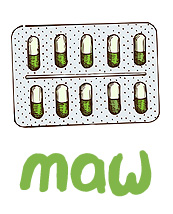
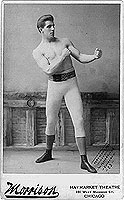
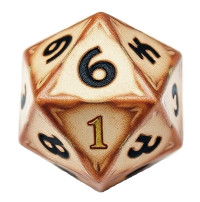
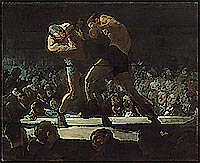
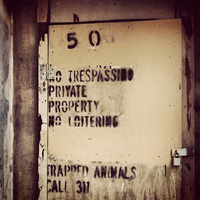
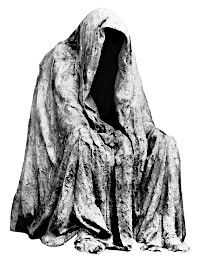

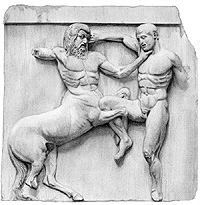

I'm not a tank expert but I've heard that the Russian tank was the best over all tank. I also heard portions of the Russian tank were American designed.
In the movie Fury (2014 film), a good movie except the stupid ending, supposedly they used actual tank tactics from WWII and in it the Shermans would use mobility to keep the Tigers from destroying them.
As for the ending why does Hollyweird have to take a perfectly executed factually correct movie and ruin it with the most completely stupid, delusional bullshit? It's infuriating.
Fury is actually the last time I went in a movie theater and it was only because someone else paid. The time before that was years and years ago. I used to go to the movies fairly often many years ago. The last time I went they wanted $10 for a large drink and a popcorn and I told them forget it I'm not going to do this anymore. I went one more time but didn't buy a drink but it's not the same and just stopped going. I can't afford it and half the time they insult your intelligence or your Morales, not that I have any worth mentioning.
I think that the tank has about gone as far as it can. I think if you made a armored cube tilted up like a diamond then put legs on it like a walker you could get the best fighting vehicle. With long legs it could haul ass and go anywhere with wide webbed feet. Put the weapons on the outside lightly armored from small arms. The diamond bottom is angled so it would take mines easily. Especially since the legs would keep it off the ground. It could be light weight because only the crew compartment would be armed. Moving really fast it would hard to hit. At speed to kill it you would need electronic anti-tank weapons that had some self maneuverability in flight.
The cannon would be like a Carl Gustaf recoilless rifle. You could even use very large warheads.
en.wikipedia.org/wiki/Carl_Gustaf_recoilless_rifle
or
en.wikipedia.org/wiki/M40_recoilless_rifle
I bet you could fit a lot these in an aircraft because it would lighter. Maybe air drop them. The ammo would auto load. A machine gun could be in arms with fingers so you could point and shoot. One driver spotter and one gunner. Maybe the driver could take the machine guns and the gunner spot and fire the guns. The seats would be like motorcycle seats so you could stand up. It would take a fair bit of computing to balance the thing but if we can drive a car autonomously then it's mostly a matter of software. It would have battery power with an engine for sustained power. That would give you super fast movement for small amounts of time. Just what's needed.
This is a super interesting post. I still haven't gotten through all of it. It's a lot of info.